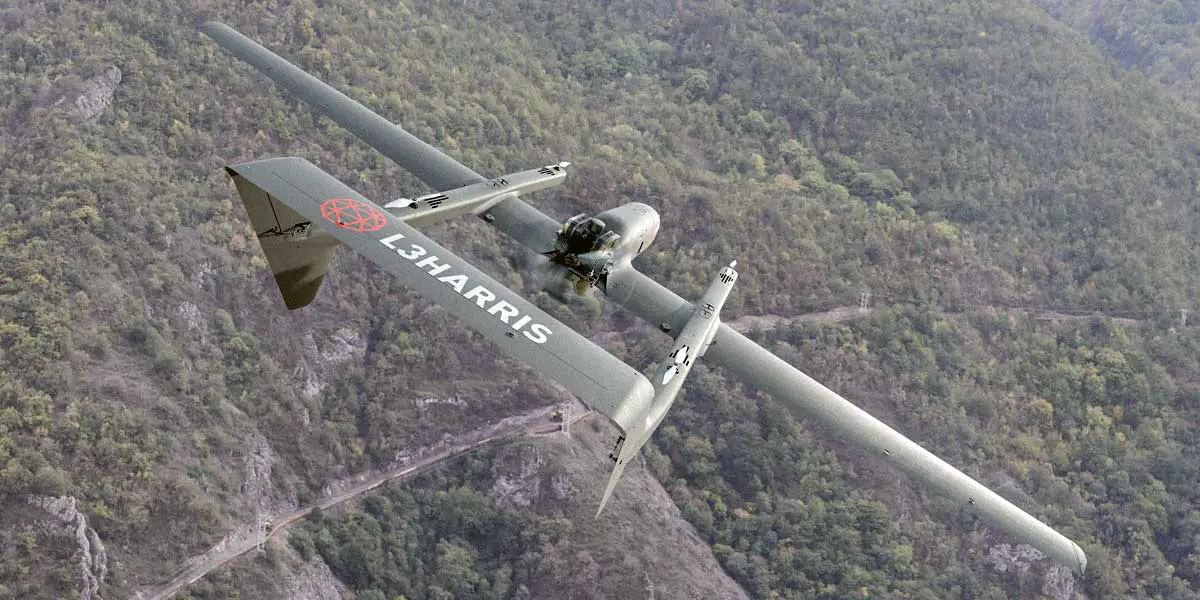As the U.S. Navy seeks to develop and field advanced unmanned systems, the Naval Air Systems Command’s Small Tactical Unmanned Aircraft Systems Program will look to the FVR-90 to continue VTOL experimentation and maturation efforts due to its tactical mobility and agility. When deployed at sea, today’s unmanned aircraft systems (UAS) have a tall order to fill; they must be capable of operating in harsh maritime environments, capable of hosting a wide variety of payloads and sensors, and deployable from maritime platforms without the need for launch or recovery equipment—all while delivering exceptional endurance and range. The Navy recently entered into an Other Transaction Authority with L3Harris to partner in developing a new UAS engine based on the FVR-90 airframe. In the coming months, teams from the Navy, L3Harris’ Agile Development Group, and Cobra AERO will collaborate to develop a heavy fuel variant of the FVR-90 UAS using the A99 HFE (heavy fuel engine system) that is more capable and agile than those the service currently uses. The prototype project is a step in the Navy’s longer-term strategy to develop Vertical Take Off and Landing (VTOL) systems that offer greater tactical mobility and do not require launch and recovery equipment.
“Unmanned systems play an increasingly important role in military tactical and strategic operations, and this project is a big step forward in positioning ourselves for successful mission support against evolving Navy and Marine Corps UAS threats and mission requirements. Our system provides a plethora of different capabilities that can be applied to a wide range of operations; from humanitarian assistance, to search and rescue, to surveillance and reconnaissance. The ultimate goal is to provide our warfighters with cutting-edge technologies that enhance their capabilities and keep them safe. When it comes to launching a UAS at sea, every second counts. Conditions are changing quickly and the faster you can deploy, the faster you can begin gathering critical intelligence and increase the chances of mission success. The FVR-90 is tailor-made for the challenges of a maritime environment, and we’re looking forward to bringing its capabilities to bear on developing a next-generation UAS prototype for the Navy,” said Ed Zoiss President Space and Airborne Systems, L3Harris.

The FVR-90 uses the L3Harris videoScout® as its control station, a multiband digital data and video communication system, which is already integrated and operational throughout the fleet on numerous U.S. Navy and U.S. Marine Corps Afloat assets, allowing it to integrate onto various vessels. In addition, L3Harris will be able to demonstrate other company technologies including the CMDL tactical radio and WESCAM MX™-8 EO/IR payload. Designed for long endurance, 12-18 hours with a robust payload capacity, the FVR-90’s innovative modular design includes interchangeable nose payloads, boom mounts for detachable payloads and integrated radio bays for maximum flexibility in dynamic environments. The FVR-90 is efficient and effective. It only takes a two-person operation team roughly one hour to get it up and running. No additional equipment is needed.
L3Harris established the ADG in 2022 as an innovation accelerator, bringing approximately 1,000 engineers, program managers, technicians, and operations professionals together to focus on front-end development for urgent national security solutions. Using an agile development approach, the team works to deliver innovative solutions within a fraction of the time and cost of industry norms. Initial focus areas include advanced sensors, weapons systems, and unmanned/multi-mission systems. L3Harris Technologies, Inc. is an American technology company, defense contractor, and information technology services provider that produces command and control systems and products, wireless equipment, tactical radios, avionics and electronic systems, night vision equipment, and both terrestrial and spaceborne antennas for use in the government, defense, and commercial sectors. It was formed from the merger of L3 Technologies (formerly L-3 Communications) and Harris Corporation on June 29, 2019, and was expected to be the sixth-largest defense contractor in the United States.















